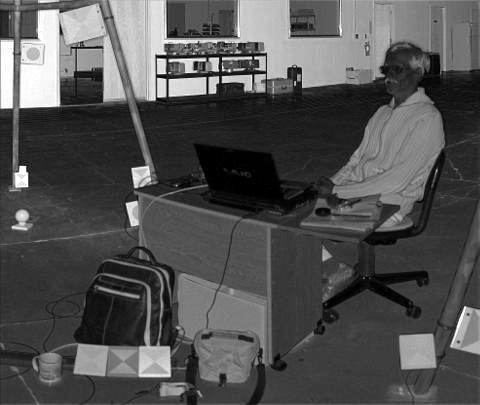1550 nm
 About the infrared photo on Habré has already been written (for example, here and here ). Let me remind you that the range of visible light is from 0.4 to 0.7 microns, the infrared range starts from 0.7 microns and extends to millimeter waves. A conventional digital camera (even with a remote IR absorbing filter) works, at best, up to a wavelength of 1.05 microns. The range of operation of thermal imagers (also IR cameras) is much further - about 7-14 microns. And what between them?
About the infrared photo on Habré has already been written (for example, here and here ). Let me remind you that the range of visible light is from 0.4 to 0.7 microns, the infrared range starts from 0.7 microns and extends to millimeter waves. A conventional digital camera (even with a remote IR absorbing filter) works, at best, up to a wavelength of 1.05 microns. The range of operation of thermal imagers (also IR cameras) is much further - about 7-14 microns. And what between them?Immediately past 1.1 microns are wide absorption bands of light by water vapor:

The transparency window between them (1.2-1.3 microns) is occupied by the military, I do not know why. The second absorption band ends at about 1.5 µm, after which another transparency window begins. And the most popular in it turned out to be light with a wavelength of 1.55 microns: lasers and photoreceivers are produced for it, which, moreover, are not prohibited by the military. And this did not fail to take advantage of manufacturers of laser scanners.
Of course, the main task of the 3D scanner is to measure the distance to the points of the object and get its geometric shape. But, since the measurement takes place by means of optics, an image is obtained as a side effect. In the case of laser scanners, the image is obtained at the wavelength at which the laser operates. Therefore, there are no colors in it - the result can be considered black and white.
There is a significant difference between a photograph (even with the use of a filter) and an image obtained from a laser scanner. The camera is actively using external lighting. The scanner completely ignores it, and uses only those photons that it has emitted itself. The result is obtained as if the camera was working in absolute darkness, using a point flash. Distant objects come out dark, the surface angled - too. But otherwise, these images can be considered as a rough approximation to what the world would look like for those whose eyes are tuned to this wave.
')
People have changed the most. If at 0.8-0.9 microns in people in the photographs, only the skin defects smoothed out, then everything changed by 1.55 microns - for some reason, the skin became black, and the hair - white:

Clothes — both cotton and wool — turned white. Although this was observed even in the near IR.
Water turned out to be completely opaque - it looks like ink:

And this is very good. It means that the eye not only does not see these photons, but they also will not reach the retina at all. Therefore, the requirements for the maximum permissible laser power are several orders of magnitude weaker than for visible light and for near-IR.
Orange juice is as black as water. The dark glass mug did not become transparent, and the sugar in it remained white:

The coil of dull scotch has darkened.

The illustration on the cover of the book has changed, but somehow selectively:

On a black leather backpack, the leather remained black, and the fabric inserts with zippers became white. Bleached and bag and strap for the camera (also made of cloth). But the black-and-white metal targets changed very strange: one became uniformly gray, the other remained the same, although the contrast decreased, and in the third the dark and light areas changed their roles. But it depends on the angle of incidence of the beam: in the picture with the book, the beam did not fall perpendicularly, and the ratio of the brightness of the areas on the third target was restored.

Here are some more IR images - but there are no paired color photos for them, unfortunately.




Source: https://habr.com/ru/post/363039/
All Articles